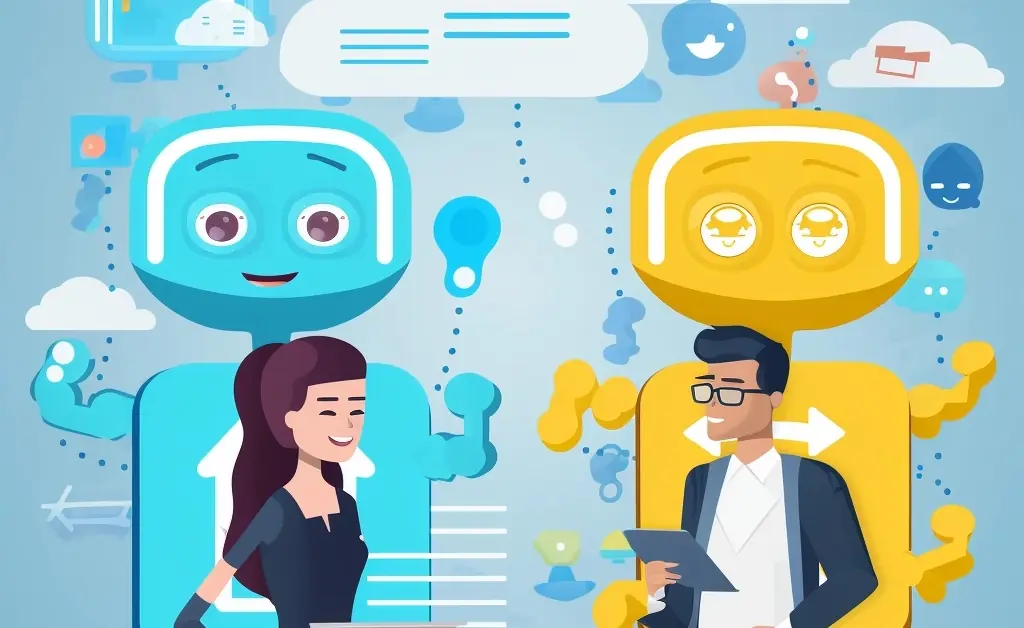You might have read about the growing role of AI in the customer experience and customer support software.
Customer care is going through a revolution of new technology, and we’re bombarded with amazing statistics such as this one:
“By 2025, as many as 95 percent of all customer interactions will be through channels supported by artificial intelligence (AI) technology.”
But what do these AI buzzwords actually mean, and how will they impact customer service solutions? Here’s our guide to artificial intelligence terms in CX.
Artificial intelligence in customer support glossary:
AI
An AI is a machine that can perform functions that we associate with human intelligence. Until around ten years ago, AI was most often associated with symbolic algorithms (logic) that did not use learning. Route planning algorithms and the first chess computers are "traditional" AIs. In recent years the lines have been blurred, and the best-performing algorithms all use some element of learning from data.
See also: Good, Old-fashioned AI & Real AI
Artificial Intelligence as a service (AIaaS)
AI as a Service (AIaaS) is the outsourcing of Artificial Intelligence by a third-party vendor. Just as Software as a Service (SaaS) allows other organizations to take advantage of “off-the-shelf” systems, other companies have produced without a huge investment. AI as a Service (AIaaS) helps companies that do not have the capability or desire to build, test and implement artificial intelligence systems from scratch. Companies like Raffle are producing “plug and play” AI-driven tools that are AIaaS.
Automation
Customer service automation in customer support is the process of implementing customer service tasks automatically, from routing issues to the correct teams to sending follow-up emails to customers. This eliminates manual labor using a variety of tools, including chatbots. Automation is not necessarily AI, however, a simple tasks can be programmed without the need for machine learning. The majority of chatbots are automated, not real artificial intelligence.
Chatbot
A chatbot is built around a “decision tree,” which is designed to steer the conversation to an endpoint. The decision tree represents the logical flow of the interaction between the user and the bot. They can be effective tools for relatively simple interactions requiring binary choices, e.g., meat or vegetarian pizza. A chatbot may feature some natural language processing (NLP) capabilities but can’t learn from previous interactions, so it is not “Real AI.”
Read more: Conversational AI: to chatbot or not to chatbot?
Discover the alternative to broken chatbots: Raffle Chat
Customer self-service Software
Customer self-service is a tool, provider, or service that allows users to find solutions themselves, often using a knowledge base. Organizations can use AI to direct customers to the right answer in that knowledge base by the question they’ve asked. For example, Raffle Site Search uses natural language processing to instantly find relevant answers from companies’ knowledge bses and deliver them to customers on their websites.
Read more: 14 powerful stats that prove the importance of self-service in the customer experience
Data (Unlabeled)
Unlabeled data is one of the data types used to train language models. This can be text data collected from the internet or text available in companies. Practically unlimited unlabeled data is available, but care must be used because a model could learn unhelpful or even offensive things.
See also: Language model
Data (labeled)
Labeled data is a type of data used to train language models. This could be a series of questions from historical customer query logs that are labeled to help start the language model at a good level of performance before it begins to relearn (unless it’s a chatbot, which depends entirely on human input).
See also: Language model
Deep Learning
Deep Learning is a subfield of machine learning that uses model architectures with many layers of computation inspired by the organization of the brain. The computation progresses layer by layer, starting with input data and the final layer outputs the prediction. It is used for image classification, image generation (deep fakes), machine translation, speech recognition, speech synthesis, learning to play games, and many other applications.
First Line Support
First-line support is customer support, which screens all support requests and ensures that they get answers. Customers can be directed to simple workarounds or solutions if a response can be answered quickly. AI technology is increasingly used to solve First Line Support queries to save time and resources.
Good, Old-fashioned AI? (GOFAI)
Good, Old-fashioned AI is a technology built with “if-then” statements — rules programmed by humans. Sometimes known as rules engines or expert systems, they are useful for conducting repeated tasks but have little to do with actual intelligence. They automate processes but, unlike “Real AI,” don’t self-learn or improve without human intervention. Most chatbots are built using this simple technology.
See also: Real AI
Knowledge base
A customer knowledge base is a collection of published documents and information, typically including answers to frequently asked questions, how-to guides and videos, troubleshooting instructions, introductory articles, glossaries and definition lists, and other useful information for customers. Knowledge bases are made to help customers self-serve without needing to ask for help from a customer support team member.
See also: Customer self-service.
Language model
A language model can “understand” the meaning of sentences. Or, more precisely, if we take two sentences with the same meaning, their representations will be similar. This currently requires training with labeled and unlabeled data. This is a very good foundation for customer support applications such as a question-answering system because it allows us to represent questions in a way that accurately reflects how customers ask them.
Read more: How language modeling has changed NLP — and our customer service products
Machine Learning
Machine learning provides systems the ability to automatically learn and improve from experience without being explicitly programmed. This has the potential to improve customer service, customer loyalty, and brand reputation, as well as enable employees to focus on higher-value or more complex tasks. For example, a machine learning model can be trained on past customer tickets to assist the customer service agent find answers to new customer tickets.
Narrow AI
Narrow AI is an intelligent system designed to perform singular tasks it is specifically programmed to do. This might be speech recognition, facial recognition, or driving a car. In the customer experience, Narrow AI is needed for effective social chatbots or human-robot interaction.
Natural Language Processing (NLP)
Natural Language Processing (NLP) uses computer algorithms for natural text. Machine translation, question-answering, and dialogue systems are applications of NLP. A customer service query may be vague, but with NLP, we are able to interpret and analyze it. With deep learning NLP, we can understand the words, sentences, and context of your customers’ queries.
See also: Language model
Real AI
In contrast to Good, Old-fashioned AI, Real AI is a more sophisticated technology that is able to self-learn. Using machine learning and neural networks requires little to no human intervention. These programs alter themselves, are dynamic, and adjust based on the data they are exposed to. Thanks to this, they can assist customers based on previous interactions and user feedback.
Read more: What is a real AI company?
Site search
Site search refers to the functionality on a website that allows customers to search for specific content or information within the site and quickly locate articles, products, pages, or other resources they are looking for. The site search system scans the website's content and presents relevant results, making it easier for users to navigate and find the desired information efficiently. A good site search enhances user experience, improves website usability, and helps visitors discover the content they need - which reduces incoming calls and allows customer service teams to focus on the most important tasks.
Read more: 5 signs your site search is decreasing customer satisfaction
Discover Raffle's AI site search to boost your website's digital self-service: Raffle AI Site Search
AI: beyond buzzwords
When it comes to the customer experience, artificial intelligence is an exciting new development for customer support solutions. However, it can be confusing. We hope that this glossary clears up some of your questions and explains the facts behind the buzzwords.
Awesome search for your business?











.jpg)
.jpg)
%20(1).jpg)
